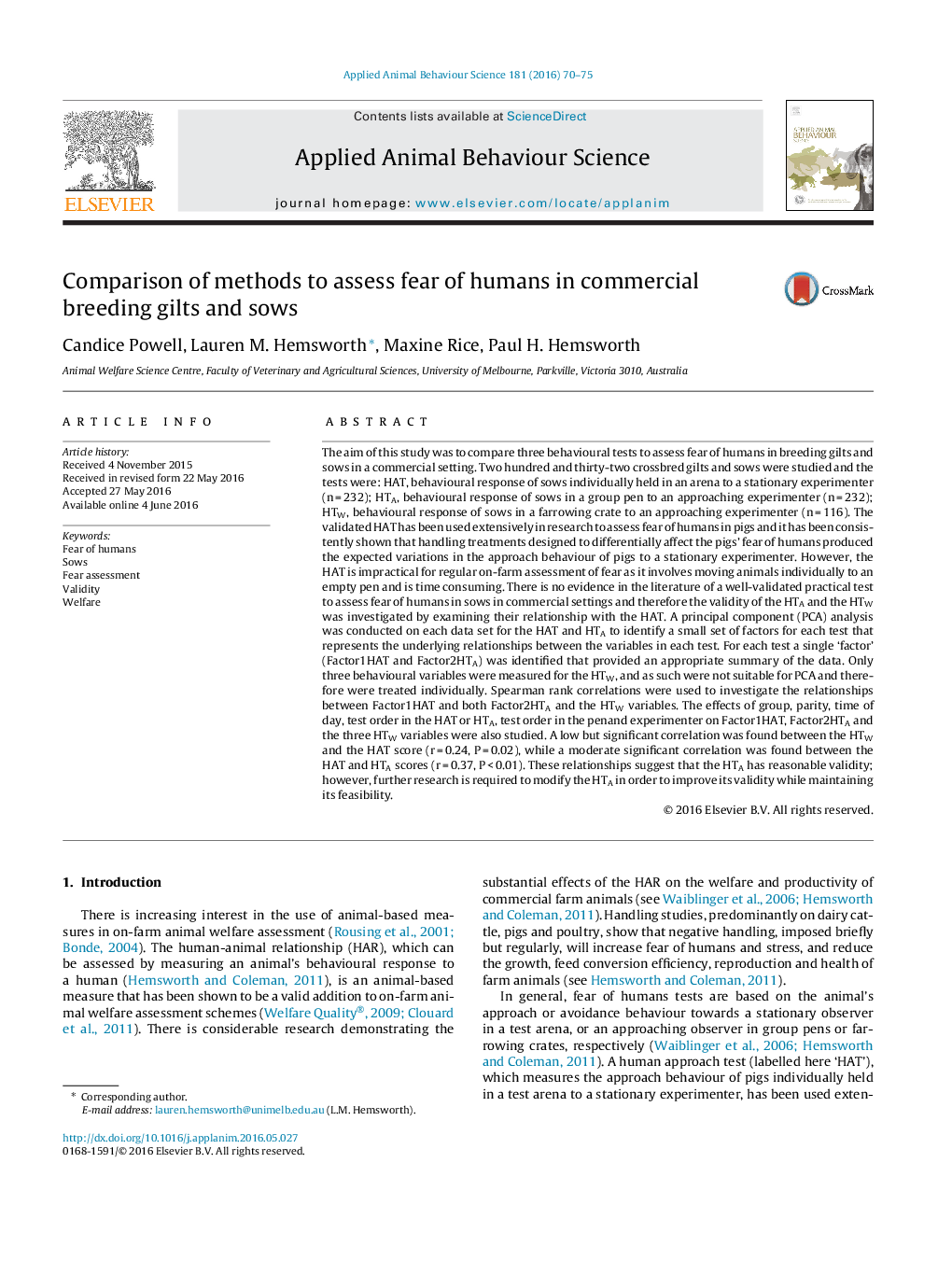| کد مقاله | کد نشریه | سال انتشار | مقاله انگلیسی | نسخه تمام متن |
|---|---|---|---|---|
| 6379294 | 1625325 | 2016 | 6 صفحه PDF | دانلود رایگان |
- We compared three behavioural tests to assess fear of humans in breeding gilts and sows in a commercial setting.
- The developed HTA and HTW were compared with the validated HAT.
- HTA: behavioural response of sows in a group pen to an approaching experimenter.
- HTW: behavioural response of sows in a farrowing crate to an approaching experimenter.
- Results suggest the HTA is a valid measure of on-farm fear of humans in group-housed gilts and sows.
The aim of this study was to compare three behavioural tests to assess fear of humans in breeding gilts and sows in a commercial setting. Two hundred and thirty-two crossbred gilts and sows were studied and the tests were: HAT, behavioural response of sows individually held in an arena to a stationary experimenter (n = 232); HTA, behavioural response of sows in a group pen to an approaching experimenter (n = 232); HTW, behavioural response of sows in a farrowing crate to an approaching experimenter (n = 116). The validated HAT has been used extensively in research to assess fear of humans in pigs and it has been consistently shown that handling treatments designed to differentially affect the pigs' fear of humans produced the expected variations in the approach behaviour of pigs to a stationary experimenter. However, the HAT is impractical for regular on-farm assessment of fear as it involves moving animals individually to an empty pen and is time consuming. There is no evidence in the literature of a well-validated practical test to assess fear of humans in sows in commercial settings and therefore the validity of the HTA and the HTW was investigated by examining their relationship with the HAT. A principal component (PCA) analysis was conducted on each data set for the HAT and HTA to identify a small set of factors for each test that represents the underlying relationships between the variables in each test. For each test a single 'factor' (Factor1HAT and Factor2HTA) was identified that provided an appropriate summary of the data. Only three behavioural variables were measured for the HTW, and as such were not suitable for PCA and therefore were treated individually. Spearman rank correlations were used to investigate the relationships between Factor1HAT and both Factor2HTA and the HTW variables. The effects of group, parity, time of day, test order in the HAT or HTA, test order in the penand experimenter on Factor1HAT, Factor2HTA and the three HTW variables were also studied. A low but significant correlation was found between the HTW and the HAT score (r = 0.24, P = 0.02), while a moderate significant correlation was found between the HAT and HTA scores (r = 0.37, P < 0.01). These relationships suggest that the HTA has reasonable validity; however, further research is required to modify the HTA in order to improve its validity while maintaining its feasibility.
Journal: Applied Animal Behaviour Science - Volume 181, August 2016, Pages 70-75
